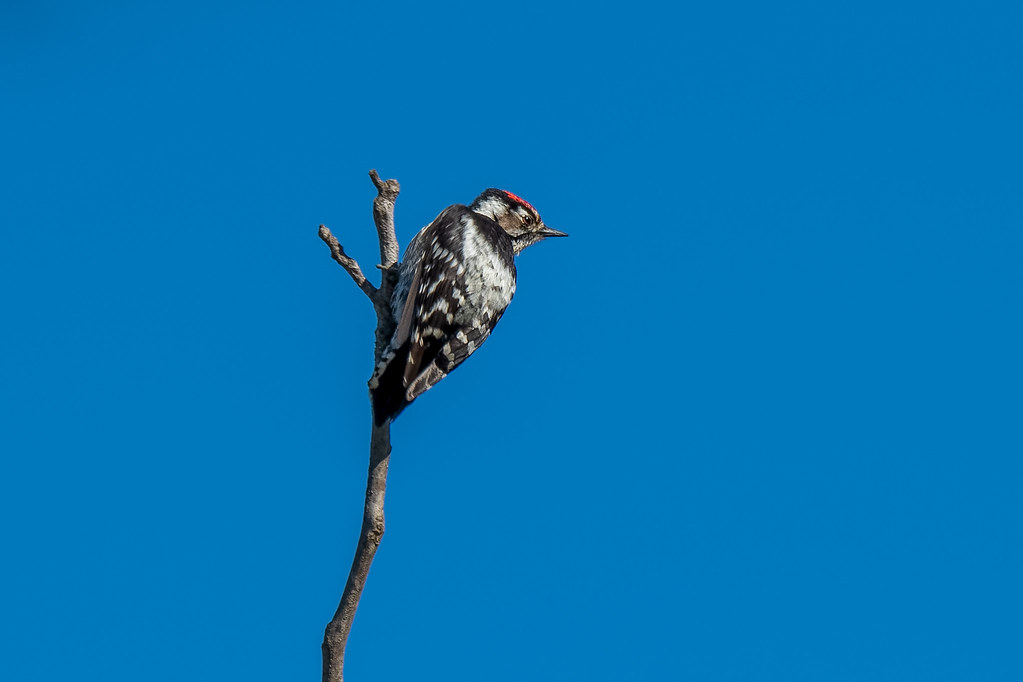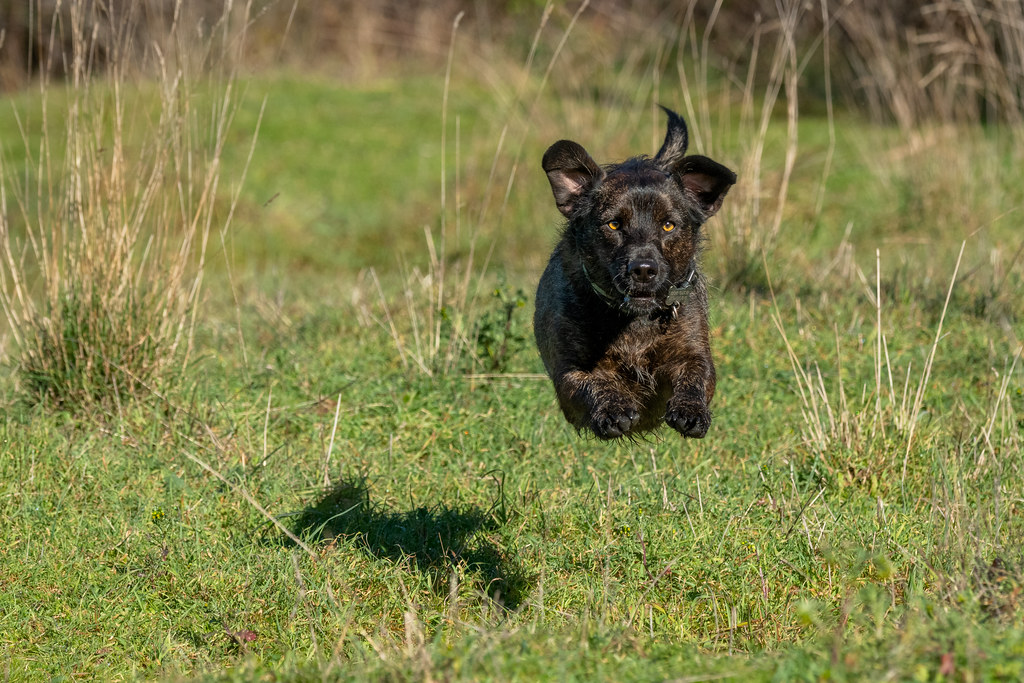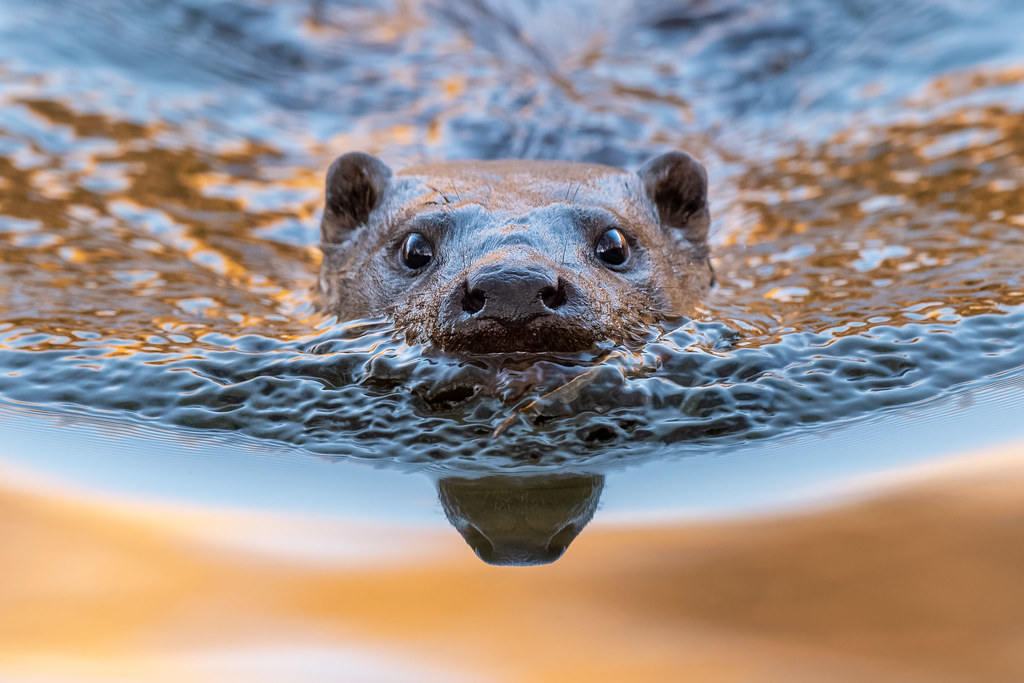Due to the terrain and the number of trees in the local area, we have large numbers of Woodpeckers and it seems that the Lesser Spotted Woodpecker outnumbers all the other species (Greater Spotted, Iberian Green and Wryneck).
I often hear them tapping away on trees and their call which is similar to the Iberian Green’s “laughing call” but softer and cuter. The name “Lesser” is often thought that its because they are seen less often but it actually means smaller. In other words a smaller version of the Greater Spotted Woodpecker. They are the size of a sparrow and the female is often overlooked due to its black and white colours. The male as seen in the photo below has a red crown.
Here is a photo from a few mornings ago. It’s quite heavily cropped so not my usual quality of detail.
{Click image(s) to view on Flickr - opens in new tab}




